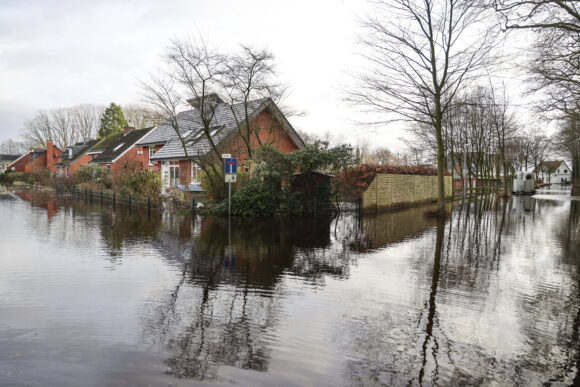Extreme weather in Germany again caused high insurance claims this year, with an estimated price tag of €4.9 billion (US$5.4 billion) during 2023, according to the German Insurance Association (GDV).
This extreme weather – also known as severe convective storms – includes storms, hail and flooding from heavy rain.
“Insured losses to houses, household contents, businesses and motor vehicles are expected to have risen by €900 million to €4.9 billion [US$999 million to US$5.4 billion] in 2023 compared to the previous year,” according to Jörg Asmussen, managing director of the GDV.
Property insurance accounted for losses of €3.6 billion (US$4.0 billion), or €2.7 billion (US$3 billion) for storms and hail damage and €900 million for other natural hazards such as flooding from heavy rainfall, which is slightly below average, according to the latest GDV Natural Hazards Assessment.
For motor insurers, on the other hand, 2023 was above average with around 465,000 claims amounting to €1.3 billion (US$1.4 billion), said the GDV, noting that the long-term annual average in Germany is €1.1 billion (US$1.2 billion).
Major damage caused by winter and autumn storms was largely absent in 2023, but the picture was quite different in the summer, the GDV said, explaining that in August alone, severe storms caused insured losses of €1.5 billion (US$1.6 billion), which is almost one-third of the total annual loss.
Non-life insurers had claims amounting to €950 million ($1.1 billion), while motor insurance claims came to €550 million (US$610.3 million), GDV said.
In June, the storms “Kay” and “Lambert” had already caused severe damage amounting to €740 million (US$821.2 million). Of this amount, claims of €390 million (US$432.8 million) were paid by property insurers and motor insurers paid the remaining €350 million (US$388.4 million).
Protection Against Natural Catastrophes
With natural hazard insurance, property owners can insure themselves against other natural hazards, such as flooding from heavy rainfall, GDV explained.
“Many property owners are unaware of the natural hazards that threaten their homes. They therefore forego this existential protection, even though sufficient insurance cover is offered,” said Asmussen, noting that approximately 54% percent of residential buildings now have insurance against other natural hazards.
However, this insurance cover could become more expensive in the future as a result of climate change and in the absence of climate impact adaptation, the GDV continued.
Against this backdrop, prevention and adaptation to climate impacts are becoming increasingly important from the perspective of the insurance industry, the GDV said. They help ensure that losses caused by natural disasters and thus insurance premiums do not get out of hand financially.
“In many places, it is being planned and built as if climate change and its consequences did not exist,” Asmussen added.
“That’s why we need adaptation to climate change to be anchored in building regulations, less land sealing and building bans in flood plains.”
In order to mitigate the consequences of climate change, insurers have developed an overall concept that comprises three core elements: binding steps to adapt to climate impacts, private insurance cover for homeowners and state provision in the event of a catastrophic major event, the GDV continued.
Photograph: Roads and residential buildings are flooded in the area of the river Woerpe in Lilienthal, Germany, on Thursday, Dec. 28, 2023. Parts of northern Germany are continuing to grapple with flooding as rivers remain swollen after heavy rain. (Focke Strangmann/dpa via AP)
Was this article valuable?
Here are more articles you may enjoy.



 Hurricane Beryl Triggers Record Payout for Caribbean Insurer
Hurricane Beryl Triggers Record Payout for Caribbean Insurer  Beryl’s Remnants Spawned 4 Indiana Tornadoes, Including an EF-3: NWS
Beryl’s Remnants Spawned 4 Indiana Tornadoes, Including an EF-3: NWS  Woman Used Photos from Another Person in State Farm Claim, NCDOI Says
Woman Used Photos from Another Person in State Farm Claim, NCDOI Says  Progressive Q2 Net Income Skyrockets Over 320%
Progressive Q2 Net Income Skyrockets Over 320% 

